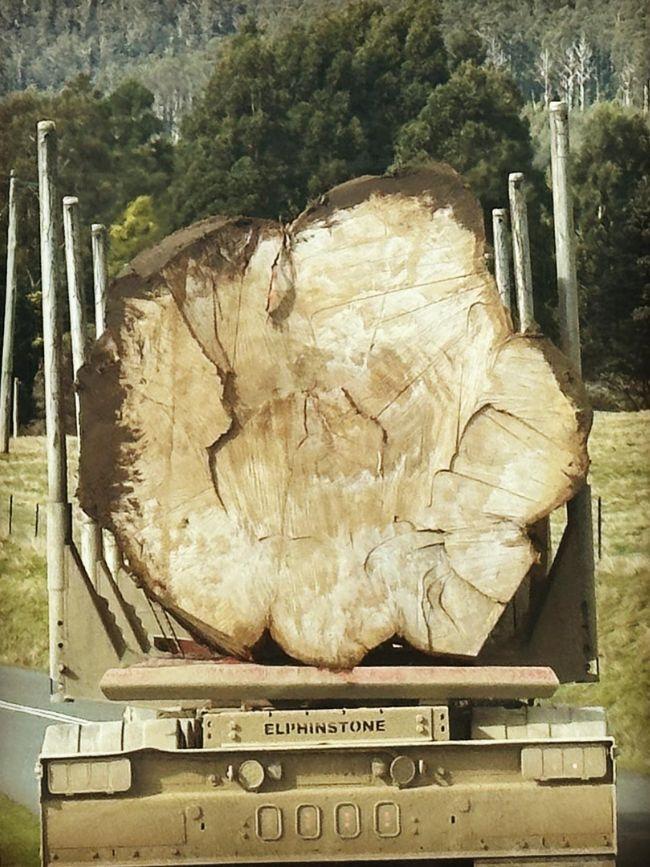Media Releases - 16 August 2023
Story behind Florentine forest where giant tree ransacked from is one of destruction & threatened species

Footage of a giant tree being hauled away from a 28-hectare area of the Florentine Valley in southern Lutruwita/Tasmania has attracted a national outcry. The tree, ransacked from an ancient intact temperate forest, full of rich mosses, towering tree ferns and a spongy forest floor built up over millennia, is one of many being logged by Tasmania’s government and its logging agency, Forestry Tasmania, primarily for woochips1.
Wilderness Society campaigners came across this partially logged area of forestry in late April, the same day that alleged illegal logging that is currently subject to a legal challenge was discovered close by in the Styx. After surveying the area, several large tree stumps were recorded and reported to Forestry Tasmania.
Industrial logging machines have since been seen in the coupe, and it was revealed that several trees that volunteer citizen scientists had surveyed and reported to Forestry Tasmania as large trees had been chopped down. The area of Florentine forest where the giant tree was taken from has been partly logged but remains mostly intact.
This beautiful forest has been well assessed by citizen scientists and its high conservation values are clear. There is an incredibly biodiverse range of fungi in this area and it’s prime habitat for hollow dependent species, such as endangered masked owls. The area that’s being logged contains over 50 large trees over two metres in diameter, and a giant 87-metre high Eucalyptus regnans tree. This is one of the last remaining intact high conservation value forests in the Florentine, and its destruction is unacceptable.
A Natural Values Atlas report shows that threatened species in this area include spotted-tail quoll, tussock skink, white-bellied sea-eagle, masked owl, grey goshawk, tasmanian devil, tasmanian wedge-tailed eagle and eastern quoll. None of these species benefit from having their habitat logged.
This area is referred to as logging coupe FO020B2 by Forestry Tasmania (FT). FT wants to take 3,000 ferns from this area3. Many ferns here are some of the tallest on the island, at least six metres tall, suggesting they are extremely old, up to 400 years. These fern giants will be destroyed in favour of the smaller ferns, to be sold in hardware stores and garden centres.
Worse still, Forestry Tasmania is logging this precious and diverse forest for 8,000 tonnes of low value woodchips. This threatened forest destruction explains why logging is Tasmania’s / Lutruwita’s single-biggest source of CO2 emissions4.
“While these forests are busily being ransacked by Forestry Tasmania, it’s important to note that the Tasmanian Government has not sought or obtained permission to log the Palawa People’s forests and it is wilfully ignoring the concept of ‘free prior and informed consent’ despite Australia being a signatory to the UN Declaration of the Rights of Indigenous Peoples,” said Tom Allen, Wilderness Society Tasmania campaign manager.
“Noting too that there is no superior combined climate and conservation action people can take than protecting forests, the Tasmanian Government continues to log these forests as if record-breaking climate chaos isn’t something it has to consider,” said Alice Hardinge, campaigner, Wilderness Society Tamania.
“Logging this forest provides an example of why logging is the single-biggest source of CO2 emissions in Lutruwita/Tasmania: a 28-hectare area of forest, will be shredded to produce 8,000 tonnes of woodchips, far more than other types of wood from this site. These woodchips emit CO2 as they breakdown and the logged forest can no longer sequester it5. Humanity doesn’t have time on our side to emit then reabsorb this carbon over decades, even hundreds of years. Nor can we afford to lose more species habitat,” said Ms Hardinge.
For further comment contact Rhiannon Cunningham, media adviser, on 0419 992 760 or [email protected]
References:
1. See line item “FO020B” on page 33, Three Year Plan, 2023-26, Forestry Tasmania
2. Enter FO020B in Forestry Tasmania’s ‘interactive map’ to see location
3. FO020B Forest Practices Plan
4. The Tree Projects,Tasmania’s Forest Carbon Report
5. Stopping native forest logging key to getting to net zero - ANU